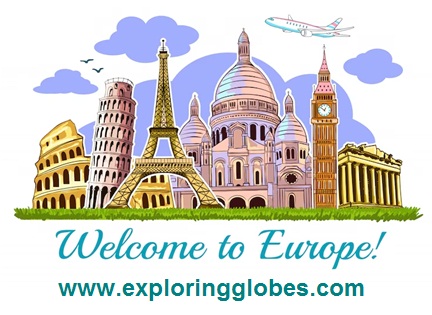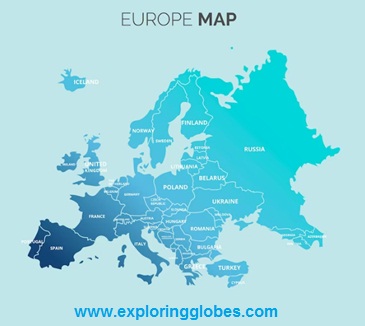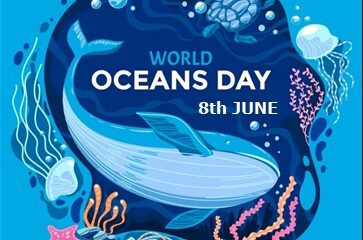EUROPE
All You Need to Know About Continents : EUROPE

Facts about Europe :
1. Europe, the second-smallest landmass, is comparable to a subcontinent.
2. Europe, which lies wholly in the Northern Hemisphere, is the westernmost part of the Eurasian landmass.
3. Europe is home to a number of major islands, including Iceland and the British Isles, which include the UK and Ireland.
4. Even though Europe is regarded as the richest and wealthiest continent, there are still certain areas that are impoverished, particularly in its eastern portions.
5. The two smallest nations in the world are located in Europe:
6. The Vatican City, which is in Italy’s capital city of Rome.
7. Monaco which is verged on three sides by France.
As per the Unified Countries, there are 44 nations in Europe. Five European nations are among the ten littlest nations on the planet: San Marino, Liechtenstein, Vatican City, Monaco and the island nation of Malta. The other five minuscule nations of our planet are situated on islands outside Europe.

Credit -Freepik
What numbers of nations are there in Europe?
1. Europe is shared by 50 nations. By the traditional definition, there are 44 sovereign states or countries in Europe. Excluded are a few nations specifically Turkey, which involves just a little piece of East Thrace on the European Balkan Promontory.
2. Cyprus, an island in the Mediterranean Ocean, is geologically essential for Asia Minor (Center East).
3. The Faroe Islands, an island bunch between the Norwegian Ocean and the North Atlantic Sea are a self-overseeing an area of the Realm of Denmark.
4. Greenland, which geologically has a place with North America, is a too an independent Danish area.
5. Kosovo is a to some extent perceived state in the Balkans.
6. A little piece of Western Kazakhstan is likewise viewed as a feature of Europe.
Europe has 4 Regions: – EASTERN – WESTERN – NORTHERN – SOUTHERN.
EASTERN REGIONS
Customarily Eastern Europe is the geological locale east of Germany and west of the Ural Mountains.
The Unified Countries geoscheme records ten nations including the previous Eastern coalition nations of Poland, Czech, and Slovakia (previously Czechoslovakia), Hungary, Romania, and Bulgaria, the previous Soviet republics of Belarus and Ukraine, as well as European Russia.
Note: EU nations are set apart with a reference mark (*).
| Sl. No | Eastern EuropeCountries | Capitals |
| 1 | Belarus | Minsk |
| 2 | Bulgaria * | Sofia |
| 3 | Czech * | Prague |
| 4 | Hungary * | Budapest |
| 5 | Moldova | Chisinau |
| 6 | Poland * | Warsaw |
| 7 | Romania * | Bucharest |
| 8 | Russian Federation | Moscow |
| 9 | Slovakia * | Bratislava |
| 10 | Ukraine | Kiev |
WESTERN EUROPE Western Europe is the western piece of Europe; it is limited by the Atlantic Sea in the west, the English Channel and the North Ocean toward the north, and by the Alps in the south.
Note: EU nations are set apart with a bullet (*); EFTA part states are set apart with an or more sign (+).
| Sl No | Western Europe Countries | Capitals |
| 1 | Austria * | Vienna |
| 2 | Belgium * | Brussels |
| 3 | France * | Paris |
| 4 | Germany * | Berlin |
| 5 | Liechtenstein + | Vaduz |
| 6 | Luxembourg * | Luxembourg |
| 7 | Netherlands * | The Hague ,Amsterdam |
| 8 | Switzerland + | Bern -Zurich |
NORTHERN EUROPE
Northern Europe alludes to the piece of Europe toward the north of Western Europe, the English Channel, and the Baltic Ocean; it additionally incorporates the Baltic republics of Estonia, Latvia, and Lithuania.
Note: EU nations are set apart with a bullet (*); EFTA part states are set apart with an or more sign (+).
| Sl No | Northern Europe –Countries | Capitals |
| 1 | Denmark * | Copenhagen |
| 2 | Estonia * | Tallinn |
| 3 | Faroe Island | Torshavn |
| 4 | Finland * | Helsinki |
| 5 | Greenland | Nuuk(Godthab) |
| 6 | Iceland + | Reykjavik |
| 7 | Ireland * | Dublin |
| 8 | Latvia * | Riga |
| 9 | Lithuania * | Vilnius |
| 10 | Northern Ireland(UK) | Belfast |
| 11 | Norway + | Oslo |
| 12 | Scotland(UK) | Edinburgh Glasgow |
| 13 | Sweden * | Stockholm |
| 14 | United Kingdom | London Birmingham Manchester |
| 15 | Wales(UK) | Cardiff |
SOUTHERN EUROPE
The term “Southern Europe” or “Mediterranean Europe” refers to the south of the continent, which is essentially subtropical.
The district is limited by the Mediterranean Ocean in the south. There are 13 sovereign nations in Southern Europe; seven of those states are individuals from the European Association.
Note: EU nations are set apart with a reference mark (*).
| Sl No | Southern Europe countries | Capitals |
| 1 | Albania | Tirana |
| 2 | Andorra | Andorra la vella |
| 3 | Bosnia & Herzegovina | Sarajevo |
| 4 | Croatia * | Zagreb |
| 5 | Cyprus * | Nicosia(Lefkosia) |
| 6 | Gibraltar(UK) | Gibraltar |
| 7 | Greece * | Athens |
| 8 | Italy * | Rome Milan |
| 9 | Kosovo | Pristina |
| 10 | North Macedonia | Skopje |
| 11 | Malta * | Valletta |
| 12 | Monaco | Monaco |
| 13 | Montenegro | Podgorica |
| 14 | Portugal * | Lisbon |
| 15 | San Marino | San marino |
| 16 | Serbia | Belgrade |
| 17 | Slovenia * | Ljubljana |
| 18 | Spain * | Madrid |
| 19 | Turkey | Ankara Istanbul |
| 20 | Vatican city | Vatican city |
Other facts about Europe : –
Most elevated Point
With a level of 5,642 m, Mount Elbrus is Europe’s most elevated mountain. The torpid spring of gushing lava lies in the Caucasus Mountains in southern Russia.
Mont Blanc at 4,808 m is the most elevated mountain in Western Europe and the most noteworthy pinnacle of the Alps.
Biggest Lakes
Lake Lagoda upper east of St Petersburg in Russia is the biggest lake totally in Europe with a surface area of 17,700 km². Lake Onega found upper east of Lake Lagoda in European Russia has a surface area of 9,700 km². Other significant lakes are Lake Vanern in Sweden (biggest lake in Western Europe) and Lake Saimaa in Finland.
Lake Balaton in Hungary is the biggest lake in Focal Europe with a surface area of 592 km².
Longest Stream
Europe’s longest stream is the Volga with a length of 3,530 km (2,190 mi); the waterway’s catchment region is predominantly inside Russia. The stream streams into the Caspian Ocean.
The second-longest stream in Europe is the Danube with a length of 2,850 km (1,770 mi), the longest waterway in the European Association district courses through ten nations and purges into the Dark Ocean.
Major Topographical Districts of Europe
Major topographical districts in Europe are Scandinavia and the Scandinavian Landmass, the Baltic Ocean, the North Ocean, the English Isles, the Incomparable European Plain, the Focal European Uplands, the Alps, the Mediterranean, the Italian Promontory and the Apennine Mountains, the Iberian Landmass, the Pyrenees, the Balkans and the Balkan Promontory, the Dark Ocean and the Caucasus.
Dialects of Europe
Significant dialects of Europe are English, French, German, Greek, Italian, Spanish, Portuguese, Nordic Dialects, and East European dialects.
-

 ASIA3 years ago
ASIA3 years agoAll You Need to Know About Continents : ASIA
-

 WORLD INFO3 years ago
WORLD INFO3 years agoAll You Need to Know About Continents: Facts and More
-

 AFRICA3 years ago
AFRICA3 years agoAll You Need to Know About Continents : AFRICA
-

 AUSTRALIA3 years ago
AUSTRALIA3 years agoAll You Need to Know About Continents : Australia
-

 WORLD INFO3 years ago
WORLD INFO3 years agoThe World’s Oceans
-

 AMERICAS3 years ago
AMERICAS3 years agoAll You Need to Know About Continent : THE AMERICAS
-

 ANTARCTICA3 years ago
ANTARCTICA3 years agoAll You Need to Know About Continents : Antarctica
